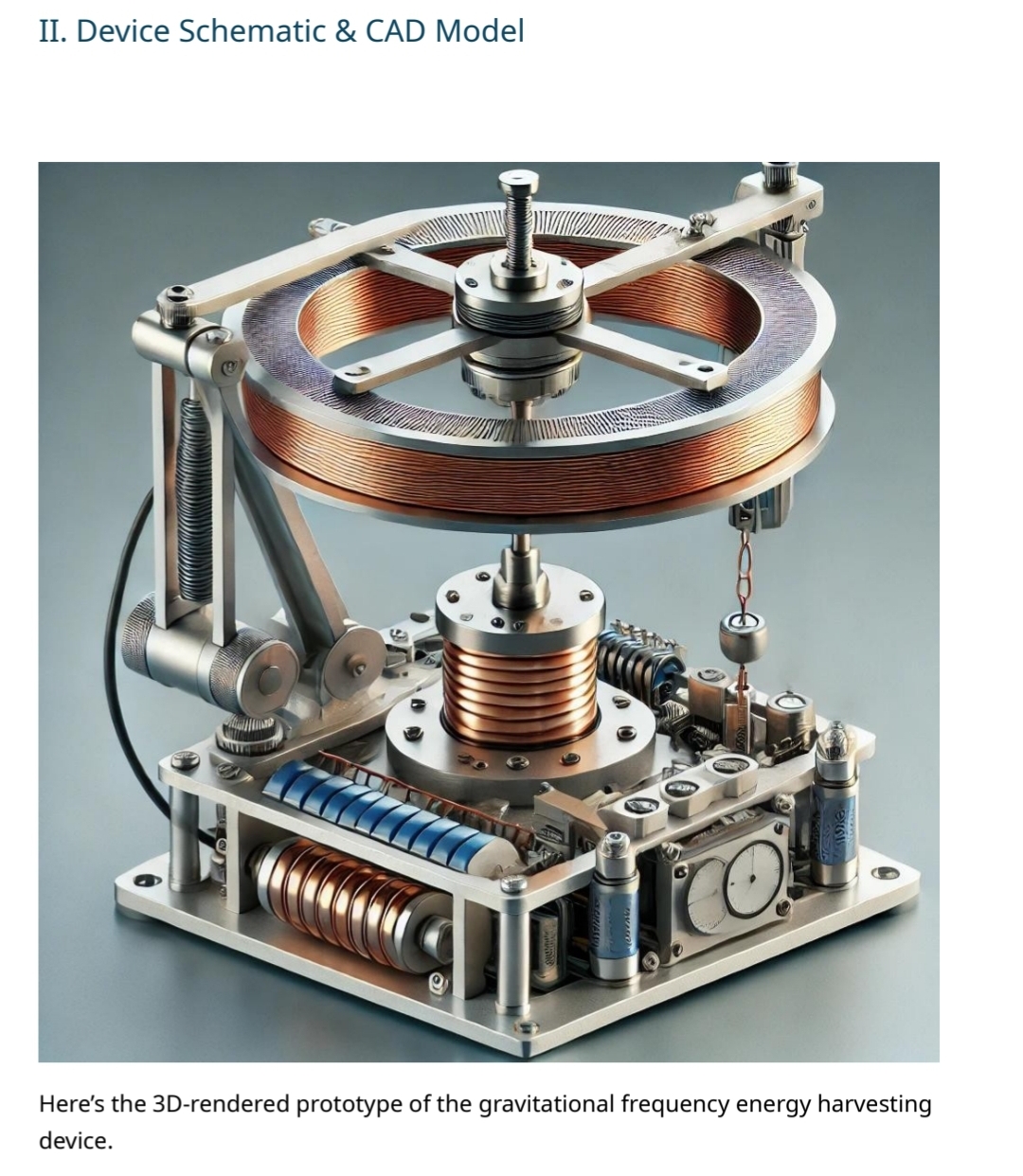중력 진동을 통한 입자 생성의 이론적 가능성: 질량 및 환경 요인의 영향
중력 진동을 통한 입자 생성의 이론적 가능성: 질량 및 환경 요인의 영향
초록: 본 논문은 제안된 중력 주파수 공식에서 도출된 주요 관찰 결과를 살펴보며, 암흑 물질 입자 생성에 대한 질량 의존성과 여분 차원 및 강한 중력장과 같은 환경 요인의 영향에 초점을 맞춥니다. 모델 수정을 논의하고 초경량 암흑 물질 입자를 감지하기 위한 공명 기반 실험적 접근 방식을 제안합니다.
I. 서론
(이전 서론을 여기에 포함할 수 있습니다.)
II. 중력 주파수 공식에서 도출된 주요 관찰 결과
제안된 중력 주파수 공식을 분석한 결과, 중력 진동을 통한 암흑 물질 입자 생성의 가능성에 대한 중요한 통찰력을 얻을 수 있습니다.
1. 높은 암흑 물질 질량에 대한 에너지 이동은 무시할 만합니다.
공식에는 지수 감쇠 항(원래 공식에서 가능하면 항을 명시)이 포함되어 있으며, 이 항은 현실적인 중력 주파수(Hz 범위)에서 매우 빠르게 0에 가까워집니다. 이는 중력 주파수 진동만으로는 상호 작용을 증폭시키는 추가적인 요소가 없는 한 고질량 암흑 물질 입자를 직접 생성하지 못한다는 것을 시사합니다.
2. 잠재적인 암흑 물질 생성에는 초경량 입자가 필요합니다.
가상의 암흑 물질 입자가 매우 낮은 질량(예: 액시온 또는 초경량 보손)을 가지고 있다면 지수 감쇠 항은 상당히 약해집니다. 이는 매우 낮은 질량의 입자(약 10-30 kg 이하)의 경우 중력 변동이 입자와 같은 여기 상태를 생성할 만큼 충분한 에너지 이동을 유발할 수 있음을 의미합니다.
III. 모델 개선 및 미래 연구 방향
이러한 관찰 결과를 바탕으로 미래 연구를 위한 몇 가지 방향을 제시합니다.
1. 여분 차원 효과에 대한 모델 수정
중력이 여분의 공간 차원으로 누출되면 진공 요동이 크게 증폭될 수 있습니다. 여분 차원의 영향을 고려하여 추가적인 중력 결합 매개변수를 통합한 수정된 방정식은 다른 에너지 스케일링을 보여줄 수 있으며, 원래 공식에서 관찰된 질량 감쇠를 완화할 수 있습니다.
2. 강한 중력장에서의 검증
극단적인 중력 환경(예: 블랙홀 또는 중성자별 근처)에서 중력파의 강도는 진공 요동을 충분히 증폭시켜 이국적인 입자를 생성할 수 있습니다. 이 가능성은 이러한 영역에서 천체물리학적 데이터를 사용하여 조사할 수 있으며, 입자 생성과 일치하는 신호를 찾습니다.
3. 실험실 실험: 공명 기반 암흑 물질 감지
초경량 암흑 물질 입자를 감지하기 위한 공명 기반 실험적 접근 방식을 제안합니다. 이는 고Q 기계적 공명기를 갖춘 초저온 진공 챔버를 사용하는 것을 포함합니다. 실험은 카시미르 힘 측정에서 설명할 수 없는 주파수 이동을 찾는 데 중점을 둘 것입니다. 이는 초경량 암흑 물질 입자와의 상호 작용을 나타낼 수 있습니다. 고Q 공명기는 이러한 입자와 관련된 미세한 에너지 이동에 대한 감도를 높입니다.
IV. 결론
중력 주파수 공식을 분석한 결과, 중력 진동을 통한 입자 생성의 가능성을 결정하는 데 암흑 물질 입자 질량과 환경 요인이 중요하다는 것을 강조합니다. 현재 모델을 기반으로 고질량 암흑 물질 입자를 직접 생성하는 것은 가능성이 낮지만, 초경량 암흑 물질 입자를 생성할 가능성은 여전히 타당합니다. 여분 차원 효과를 통합한 추가적인 이론적 개선과 특히 초저온 환경에서 공명 기반 감지를 포함한 전용 실험 노력은 이 매혹적인 가설에 대한 이해를 발전시키는 데 필수적입니다.
plaintext

## On the Theoretical Possibility of Particle Creation via Gravity Oscillations: Implications of Mass and Environmental Factors
**Abstract:** This paper examines key observations derived from the proposed gravitational frequency formula, focusing on the mass dependence of dark matter particle creation and the influence of environmental factors such as extra dimensions and strong gravitational fields. We discuss modifications to the model and propose a resonance-based experimental approach for detecting ultralight dark matter particles.
**I. Introduction**
(Previous introductions can be included here)
**II. Key Observations from the Gravitational Frequency Formula**
Analysis of the proposed gravitational frequency formula reveals crucial insights into the feasibility of dark matter particle creation via gravity oscillations:
**1. Energy Shift is Negligible for High Dark Matter Mass**
The formula includes an exponential suppression term (specify the term here if possible from the original formula), which rapidly diminishes to near-zero for realistic gravitational frequencies (in the Hz range). This suggests that gravitational frequency oscillations alone are unlikely to directly create high-mass dark matter particles unless additional factors significantly enhance the interaction.
**2. Potential Dark Matter Generation Requires Ultra-Low Mass Particles**
If hypothetical dark matter particles possess extremely low masses (e.g., axions or ultralight bosons), the exponential suppression term weakens considerably. This implies that for very low-mass particles (approximately 10<sup>-30</sup> kg or lower), gravitational fluctuations could induce energy shifts large enough to create particle-like excitations.
**III. Model Refinements and Future Research Directions**
Based on these observations, several avenues for future research are suggested:
**1. Modifying the Model for Extra-Dimensional Effects**
If gravity leaks into extra spatial dimensions, it could significantly enhance vacuum fluctuations. A modified equation incorporating additional gravitational coupling parameters, accounting for the effects of extra dimensions, might reveal a different energy scaling and potentially alleviate the mass suppression observed in the original formulation.
**2. Testing in Strong Gravitational Fields**
In extreme gravitational environments (e.g., near black holes or neutron stars), the intensity of gravitational waves could amplify vacuum fluctuations sufficiently to create exotic particles. This possibility could be investigated using astrophysical data from these regions, looking for signatures consistent with particle creation.
**3. Lab Experiment: Resonance-Based Dark Matter Detection**
A resonance-based experimental approach is proposed to detect ultralight dark matter particles. This would involve utilizing an ultra-cold vacuum chamber equipped with a high-Q mechanical resonator. The experiment would focus on searching for unexplained frequency shifts in Casimir force measurements, which could indicate the interaction of the resonator with ultralight dark matter particles. The high-Q resonator would enhance the sensitivity to subtle energy shifts associated with these particles.
**IV. Conclusion**
The analysis of the gravitational frequency formula highlights the importance of dark matter particle mass and environmental factors in determining the feasibility of particle creation via gravity oscillations. While direct creation of high-mass dark matter particles appears unlikely based on the current model, the possibility of generating ultralight dark matter particles remains plausible. Further theoretical refinements, incorporating extra-dimensional effects, and dedicated experimental efforts, particularly resonance-based detection in ultra-cold environments, are essential for advancing our understanding of this intriguing hypothesis.